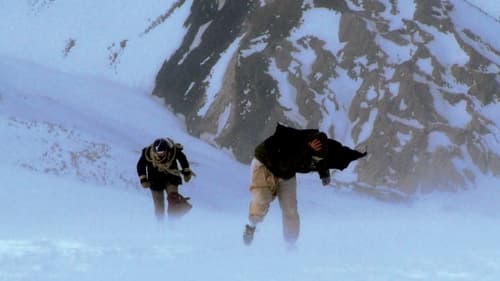
Writer
A group of archaeologists from the University of the Republic enters, for the first time in Uruguayan history, into a barracks to dig for the remains of persons imprisoned-disappeared during the military dictatorship. Only one year earlier, not even the boldest observer would have dared predict such a possibility. After one hundred days of digging, the earth reveals its secret: the first remains appear. The documentary reconstructs the process that cuts the country’s history in two: before and after.

Director of Photography
In 1971, Uruguayan journalist and writer Eduardo Galeano published his landmark work Open Veins of Latin America, in which he comprehensively described the centuries of economic exploitation of Latin America. Almost 40 years later, filmmaker Gonzalo Arijon reevaluates the situation. His search takes him from the soybean plantations of the Brazilian Amazon to the tin mines of Bolivia to the deep jungles of Ecuador. Arijon’s politically committed film allows the local populations to speak for themselves, interspersing this with archival footage of speeches by Hugo Chávez, Lula da Silva and Evo Morales. Galeano himself also speaks—sometimes in poetic language— about how the rise of socialist governments in the early 21st century is benefitting Latin America, and what more can be done.

Screenplay
In 1971, Uruguayan journalist and writer Eduardo Galeano published his landmark work Open Veins of Latin America, in which he comprehensively described the centuries of economic exploitation of Latin America. Almost 40 years later, filmmaker Gonzalo Arijon reevaluates the situation. His search takes him from the soybean plantations of the Brazilian Amazon to the tin mines of Bolivia to the deep jungles of Ecuador. Arijon’s politically committed film allows the local populations to speak for themselves, interspersing this with archival footage of speeches by Hugo Chávez, Lula da Silva and Evo Morales. Galeano himself also speaks—sometimes in poetic language— about how the rise of socialist governments in the early 21st century is benefitting Latin America, and what more can be done.

Director
In 1971, Uruguayan journalist and writer Eduardo Galeano published his landmark work Open Veins of Latin America, in which he comprehensively described the centuries of economic exploitation of Latin America. Almost 40 years later, filmmaker Gonzalo Arijon reevaluates the situation. His search takes him from the soybean plantations of the Brazilian Amazon to the tin mines of Bolivia to the deep jungles of Ecuador. Arijon’s politically committed film allows the local populations to speak for themselves, interspersing this with archival footage of speeches by Hugo Chávez, Lula da Silva and Evo Morales. Galeano himself also speaks—sometimes in poetic language— about how the rise of socialist governments in the early 21st century is benefitting Latin America, and what more can be done.

Writer
One of the most astonishing and inspiring survival tales of all time. On October 13, 1972, a young rugby team from Montevideo, Uruguay, boarded a plane for a match in Chile—and then vanished into thin air. Two days before Christmas, 16 of the 45 passengers miraculously resurfaced. They had managed to survive for 72 days after their plane crashed on a remote Andean glacier. Thirty-five years later, the survivors returned to the crash site—known as the Valley of Tears—to recount their harrowing story of defiant endurance and indestructible friendship.

Director
One of the most astonishing and inspiring survival tales of all time. On October 13, 1972, a young rugby team from Montevideo, Uruguay, boarded a plane for a match in Chile—and then vanished into thin air. Two days before Christmas, 16 of the 45 passengers miraculously resurfaced. They had managed to survive for 72 days after their plane crashed on a remote Andean glacier. Thirty-five years later, the survivors returned to the crash site—known as the Valley of Tears—to recount their harrowing story of defiant endurance and indestructible friendship.

Screenplay
We follow the efforts of Ester Gatti to find her missing granddaughter Mariana Zaffaroni. As a child, Mariana and her parents were kidnapped by a Uruguayan military team. The little girl was taken by an agent in the intelligence service who brought her up as his own daughter. Sixteen years later Ester found Mariana, but the girl chose to go on living with the people who had kidnapped her. This documentary raises questions about identity, memory and the value of truth.

Director
We follow the efforts of Ester Gatti to find her missing granddaughter Mariana Zaffaroni. As a child, Mariana and her parents were kidnapped by a Uruguayan military team. The little girl was taken by an agent in the intelligence service who brought her up as his own daughter. Sixteen years later Ester found Mariana, but the girl chose to go on living with the people who had kidnapped her. This documentary raises questions about identity, memory and the value of truth.







